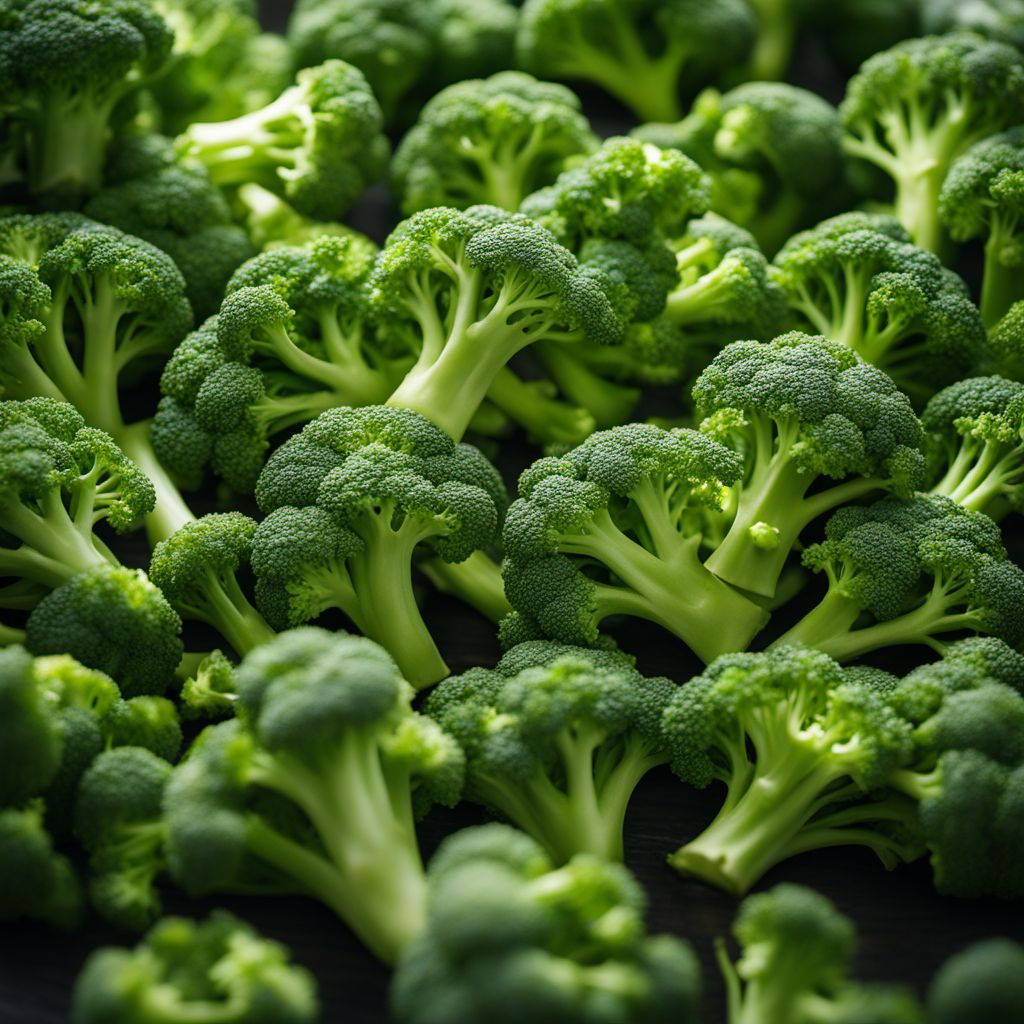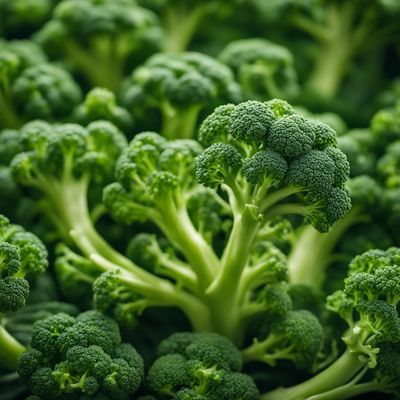
Ingredient
Broccoli and similar-
The Mighty Green: Broccoli and Its Relatives
Broccoli is a vibrant green vegetable with a dense, compact head and small, edible florets. It has a mild, slightly bitter taste and a crisp texture when raw, which becomes tender and slightly sweet when cooked. Other cruciferous vegetables, such as cauliflower, Brussels sprouts, and kale, share similar characteristics and can be used interchangeably in many recipes.
Origins and history
Broccoli and its relatives have a long history of cultivation and consumption. They are believed to have originated in the Mediterranean region and have been grown for thousands of years. These vegetables were highly valued for their nutritional content and were often used in traditional medicine for their healing properties.
Nutritional information
Broccoli and its relatives are packed with vitamins, minerals, and antioxidants. They are particularly high in vitamin C, vitamin K, and folate. These vegetables also contain compounds called glucosinolates, which have been shown to have anti-cancer properties. Additionally, cruciferous vegetables are low in calories and high in fiber, making them a healthy choice for weight management and digestive health.
Allergens
There are no known allergens associated with broccoli and its relatives.
How to select
When selecting broccoli and its relatives, look for firm, compact heads with vibrant green color. Avoid vegetables that have yellowing or wilting leaves, as this may indicate age or poor quality. The florets should be tightly closed and free from any signs of discoloration or decay. If possible, choose organic vegetables to ensure they are free from pesticides or other chemicals.
Storage recommendations
To maintain the freshness and quality of broccoli and its relatives, store them in a perforated plastic bag in the refrigerator. They can last for up to a week when stored properly. Avoid washing the vegetables until you are ready to use them, as excess moisture can cause them to spoil more quickly.
How to produce
Broccoli and its relatives can be easily grown in a home garden or purchased from local farmers markets or supermarkets. They are cool-season crops that prefer full sun and well-drained soil. Start the seeds indoors or directly sow them into the ground, depending on the specific vegetable. Regular watering and occasional fertilization will help promote healthy growth.
Preparation tips
Broccoli and its relatives can be prepared in a variety of ways, including steaming, boiling, roasting, or stir-frying. They can be enjoyed on their own as a side dish, added to salads or soups, or used as a versatile ingredient in various recipes. To enhance their flavor, try seasoning them with garlic, lemon juice, or olive oil.
Culinary uses
Broccoli and its relatives are commonly used in a wide range of dishes and cuisines. They can be added to stir-fries, pasta dishes, casseroles, and salads for added texture and flavor. These vegetables can also be used in soups, stews, and gratins for a hearty and nutritious meal.
Availability
Broccoli and its relatives are commonly available in supermarkets, grocery stores, and farmers markets. They are cultivated in many regions around the world and are readily accessible to consumers.



